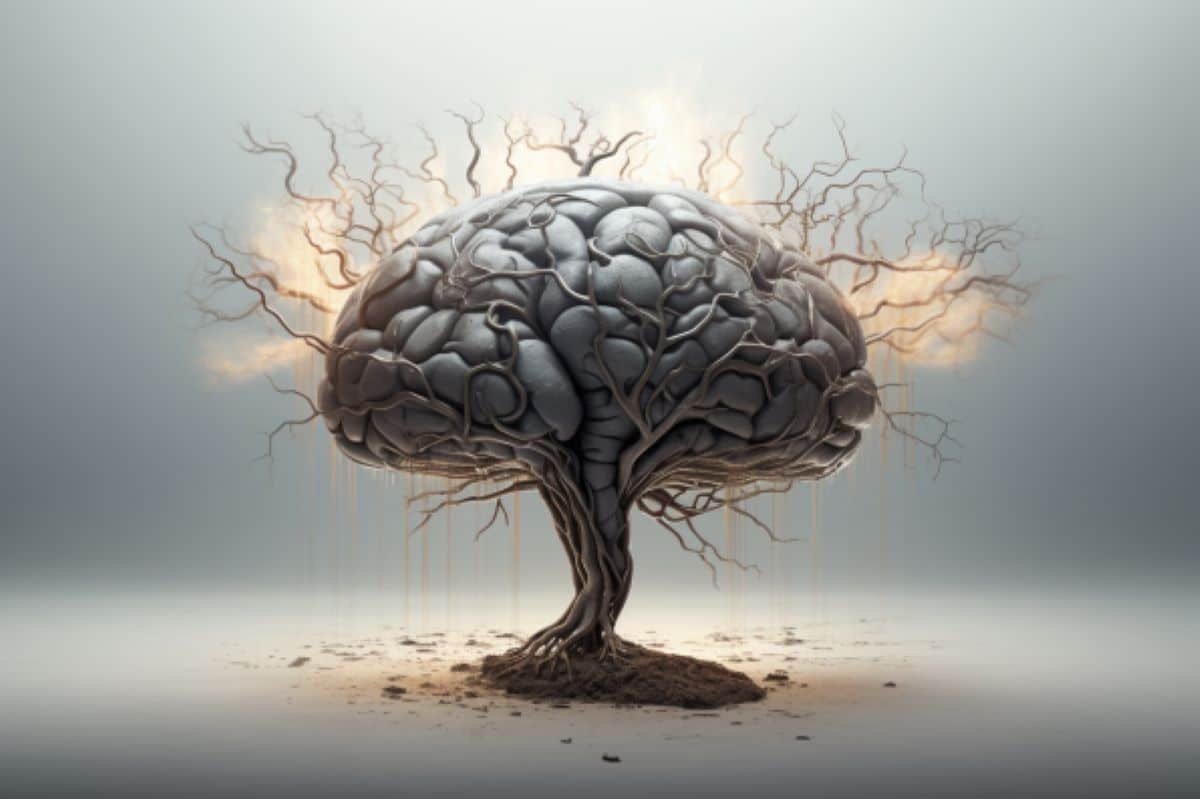Summary: A recent study illuminates the brain’s unique response to stress: releasing its own cannabinoid molecules akin to THC from cannabis plants.
Centered in the amygdala, these molecules counteract stress alarms originating from the hippocampus, an integral memory and emotion region. This hints at the body’s intrinsic mechanism for stress management.
Disruption in this system might escalate risks for stress-induced psychiatric conditions.
Key Facts:
- The amygdala, an emotional brain center, releases endogenous cannabinoids to mitigate stress, interacting with the same receptors as THC.
- When the target cannabinoid receptor was removed in mice, there was a noticeable decline in their ability to handle stress and a diminished inclination towards rewarding experiences.
- This study further supports the endocannabinoid system’s role as a potential drug-development candidate for stress-related disorders.
Source: Northwestern University
When you are under stress, your brain may release its own cannabinoid molecules to calm you down, activating the same brain receptors as THC derived from cannabis plants.
But the brain activity patterns and neural circuits that are regulated by these brain-derived cannabinoid molecules were not well known.
A new Northwestern Medicine study in mice has discovered that a key emotional brain center, the amygdala, releases endogenous (the body’s own) cannabinoid molecules under stress, and these molecules dampen the incoming stress alarm from the hippocampus, a memory and emotion center in the brain. These results provide more support for the hypothesis that these endogenous cannabinoid molecules are a body’s natural coping response to stress.
Stress exposure heightens risk for the development or worsening of psychiatric disorders from generalized anxiety and major depression to post-traumatic stress disorder (PTSD).
“Understanding how the brain adapts to stress at the molecular, cellular and circuit level could provide critical insight into how stress is translated into mood disorders and may reveal novel therapeutic targets for the treatment of stress-related disorders,” said corresponding study author Dr. Sachi Patel, chair of psychiatry and behavioral sciences at Northwestern University Feinberg School of Medicine and a Northwestern Medicine psychiatrist.
The study could indicate that impairments in this endogenous cannabinoid signaling system in the brain could lead to a greater susceptibility to developing stress-related psychiatric disorders including depression and PTSD, although this remains to be determined in humans, Patel said.
The study will be published Sept. 12 in Cell Reports.
For the study, Northwestern scientists used a new protein sensor that can detect the presence of these cannabinoid molecules at specific brain synapses in real time to show that specific high-frequency patterns of amygdala activity can generate these molecules. The sensor also showed that these molecules were released as a result of several different types of stress in mice.
When scientists removed the target of these cannabinoids, the cannabinoid receptor type 1, it resulted in poorer ability to cope with stress and motivational deficits in the mice.
Specifically, when the receptor target of these endogenous cannabinoids was removed at hippocampal-amygdala synapses, mice adopted more passive and immobile responses to stress and had a lower preference to drink a sweetened sucrose water after stress exposure. The latter finding may relate to anhedonia, or the decrease in pleasure, often experienced by patients with stress-related disorders such as depression and PTSD.
One of the leading signaling systems that has been identified as a prominent drug-development candidate for stress-related psychiatric disorders is the endocannabinoid system, Patel said.
“Determining whether increasing levels of endogenous cannabinoids can be used as potential therapeutics for stress-related disorders is a next logical step from this study and our previous work,” said Patel, also the Lizzie Gilman Professor of Psychiatry and Behavioral Sciences.
“There are ongoing clinical trials in this area that may be able to answer this question in the near future.”
Other Northwestern authors include Farhana Yasmin, Amanda Morgan and Keenan Johnson.
The title of the article is “Endocannabinoid release at ventral hippocampal-amygdala synapses regulates stress-induced behavioral adaptation.”
Funding: The research was supported by grants F31MH126I460, MH107435 and MH119817 from the National Institute of Mental Health and grant AA9013514 from the National Institute of Alcohol Abuse and Alcoholism, Integrative Neuroscience Initiative on Alcoholism, all of the National Institutes of Health.
About this stress and neuroscience research news
Author: Marla Paul
Source: Northwestern University
Contact: Marla Paul – Northwestern University
Image: The image is credited to Neuroscience News
Original Research: Open access.
“Endocannabinoid release at ventral hippocampal-amygdala synapses regulates stress-induced behavioral adaptation” by Sachi Patel et al. Cell Reports
Abstract
Endocannabinoid release at ventral hippocampal-amygdala synapses regulates stress-induced behavioral adaptation
Highlights
- BLA activity promotes eCB release at vHPC-BLA synapses
- Active stress coping recruits vHPC-BLA eCB signaling
- vHPC-BLA CB1 receptor deletion exacerbates stress-induced avoidance/anhedonia
Summary
The endocannabinoid (eCB) system is a key modulator of glutamate release within limbic neurocircuitry and thus heavily modulates stress responsivity and adaptation.
The ventral hippocampus (vHPC)-basolateral amygdala (BLA) circuit has been implicated in the expression of negative affective states following stress exposure and is modulated by retrograde eCB signaling.
However, the mechanisms governing eCB release and the causal relationship between vHPC-BLA eCB signaling and stress-induced behavioral adaptations are not known.
Here, we utilized in vivo optogenetic- and biosensor-based approaches to determine the temporal dynamics of activity-dependent and stress-induced eCB release at vHPC-BLA synapses.
Furthermore, we demonstrate that genetic deletion of cannabinoid type-1 receptors selectively at vHPC-BLA synapses decreases active stress coping and exacerbates stress-induced avoidance and anhedonia phenotypes.
These data establish the in vivo determinants of eCB release at limbic synapses and demonstrate that eCB signaling within vHPC-BLA circuitry serves to counteract adverse behavioral consequences of stress.







